Why Are Brake Pads Not Touching Whole Disc? (10 Causes)
A worn out or warped brake rotor is the most likely reason for brake pads not touching the whole brake disc. Brake rotors can be damaged by age, overheating, uneven braking, or poor maintenance. Check the brake pads for proper seating/alignemnt, thickness, and friction. Also, check the brake caliper for proper functioning and smooth motion. If the brake piston is not smooth, it will prevent contact with the rotor. If the brake pads are not seated properly after replacement, they may not contact the whole disc. Finally, air in the brake line can also affect contact of brake pads.
You may hear odd noises when braking. Or feel less stopping power. The brakes may shake too. What causes the uneven brake pad wear? And the sticking brake calipers? This keeps the brake pads from fully touching the brake disc.
Let’s look at what could cause this issue. And share tips to diagnose it. And how to fix it.
You can also read my guide on groaning noise when braking at low speed.
Below, I have explained the different components of the braking system so that you can easily troubleshoot the issue. However, if you have preliminary knowledge, you can jump straight to the causes of brake pads not touching the brake disc.
I’ve generated an interactive tool for you all to aid in identifying vehicle troubles. It leads you through easy steps. Make sure to look into it.
- Brake pads not fully touching the brake disc can reduce stopping power and be dangerous. Common causes include worn brake rotors, stuck caliper pins, misaligned wheels, loose caliper mounting, and more.
- Inspect brake rotors and pads for wear, damage, or improper fit. Check caliper slider pins for sticking and lubricate if needed. Verify wheels are aligned properly.
- Ensure lug nuts are tightened correctly when changing brakes. Confirm caliper and bracket mounting bolts are tight. Bleed brakes to remove trapped air after brake work.
- Use proper brake pad size – incorrect length or thickness can prevent full pad-to-rotor contact. Damaged brake piston may not extend enough to press pads firmly.
- Overheated, glazed brake pads can result in uneven wear and failure to contact the entire brake disc surface.
What is My Personal Experience With Brake Pads Not Contacting the Entire Disc?
My sister drives an older Toyota Camry that was experiencing reduced braking power. When I inspected it, I noticed the inner brake pads were wearing unevenly and not making full contact with the brake rotor.
I realized the slider pins were sticking, preventing the caliper from moving properly. I lubed up the pins, installed new brake pads correctly, and thoroughly bled the brakes to remove any trapped air. After the repair, the Camry’s brakes engaged smoothly across the entire brake disc surface, restoring safe stopping ability.
Understanding Disc Brakes: Key Components and Mechanics
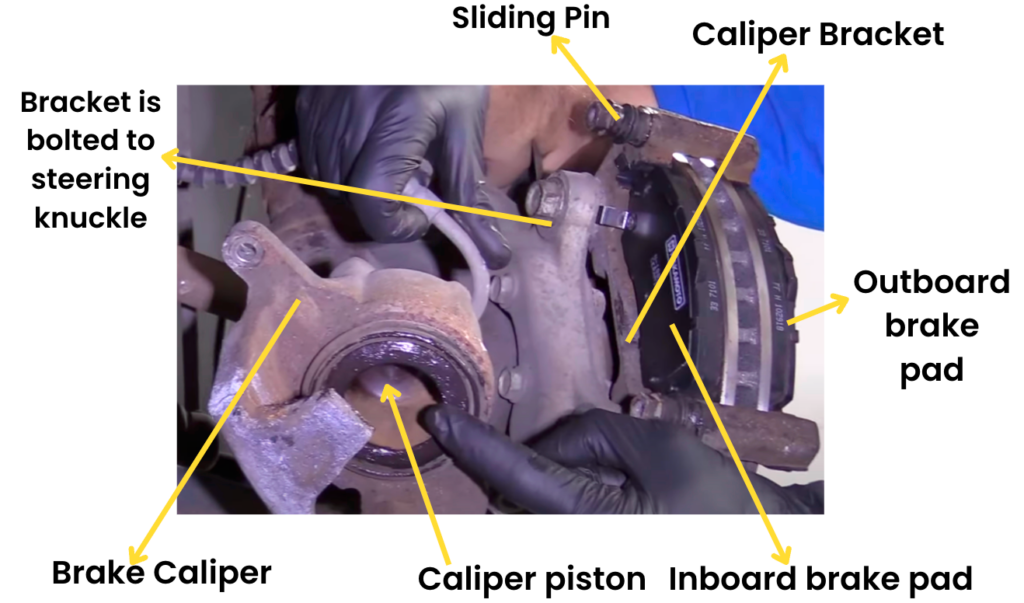
The brake parts work together to slow or stop the car.
The brake has these parts:
- Caliper
- Guide pins for caliper
- Bracket for caliper
- Brake pads
- Brake disc
How Brakes Work
When you push the brake pedal, brake fluid goes through the lines to the caliper. The caliper squeezes like a clamp. It pushes the pads against the disc. The rubbing of the pads on the disc slows and stops the car.
Why the Bracket and Pins Matter
The bracket connects the caliper to the steering knuckle and suspension. The guide pins let the caliper move the right way. This makes the brake pads wear evenly.
The video shows the caliper sliding on the pins:
Understanding the Brake Pads
Each wheel has two brake pads in the caliper. When you push the pedal, the pads grip the disc on both sides. This makes friction to slow or stop the car.
The inside pad is near the car center. The outside brake pad is farthest from the center.
The Job of the Disc
The disc (also called rotor) spins with the wheel. When you press the pedal, the caliper squeezes the pads against the disc. This friction slows the wheel and car.
How the Caliper Works
When you press the pedal, brake fluid pushes the piston. The piston presses the inside pad to the disc.
At the same time, the fluid moves the caliper on the pin. This presses the outside pad too. The disc gets squeezed between both pads to stop the car.
Recoiling Of Brake Pads After Brake Pedal Is Released
The brake fluid pushes the brake pad against the rotor when you press the brake pedal down. A rubber seal called a “square edge seal” is on the brake caliper piston. This seal helps the brake piston move and push.
When you let go of the brake pedal, the pressurized brake fluid goes away. This makes the seal snap back to its original shape. The piston moves back a little bit when this happens. This makes a small gap between the brake pad and rotor.
The square edge seal on the piston does not like to roll over, like a square rubber band. It helps make a small gap between the pad and rotor when you lift your foot off the pedal.
The caliper goes back to its first place because of the springy rubber boots on the guide pins.
The rotor may not be perfectly flat. It can wobble a little as it spins with the wheel. This wobble can push the brake pads away from the rotor a bit when you lift your foot. This is called recoil.
When the rotor starts spinning again, the spinning force makes an air pocket around it. This air pocket pushes the pads away from the rotor.
To keep the pads pushing and pulling back right, keep the edges of brake pads and slide pins lubricated. Take away any air gaps or dirt that can mess this up.
What are the Causes of Brake Pads Not Meeting the Full Rotor?
Here are the causes of uneven brake pads contact with the brake rotor:
1. Sticking Slider Pins
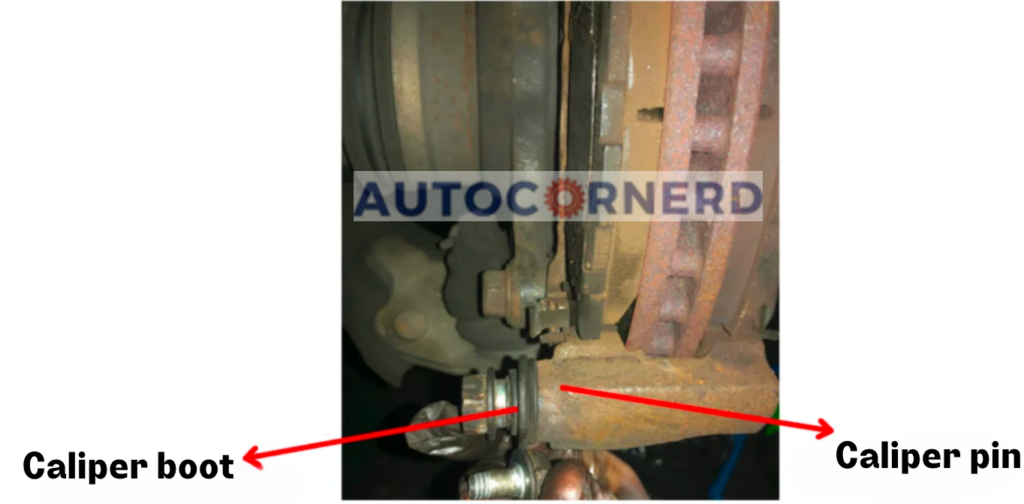
The brake pads need to touch the rotor fully when braking. If not, it is a common problem called partial brake pad engagement. One reason this can happen is sticky slider pins.
The slider pins let the brake caliper move freely. This makes sure the brake pads contact the rotor fully.
When the slider pins get stuck, the brake pad gets fixed in one spot. It cannot move to match the rotor.
Sticky pins also cause uneven wear of the brake pads. So the pads contact the rotor unevenly. This gives a bicycle kick feeling when braking.
How to know the slider pins are stuck?
Some common reasons for sticky pins:
- No lubrication – Pins get stuck if not lubricated properly.
- Rust – Rust makes the pins get stuck.
- Dirt – Dirt around the pins can make them stuck. Over time, brake dust gets into the grease. It hardens and sticks the pin.
How to fix stuck caliper pins?
If the caliper pin is seized with dust, you need to replace them. First, remove the sliding pin and clean the bore in the caliper bracket using a cleaning solution such as CRC brake cleaner or WD-40.
I would recommend these stainless steel bore brushes to clean the bore. Dip a bore brush or a cotton swab in the cleaning solution and gently clean the inside of the hole. Also, clean the sliding pin using brake cleaner. After cleaning the bore, spray WD-40 into it.
Next, lubricate the sliding pin with grease. I would recommend this one. Excessive lubrication can trap air at the tip of the slide pin, causing the caliper/pad assembly to drag on the rotor.
As such, always ensure that you use the correct amount of lubricant when applying it to the slide pins.
2. Trash Between Caliper and Mounting Bracket
The brake caliper is an important part of a vehicle’s braking system. It pushes the brake pads against the rotor using brake fluid. This slows down the wheels when braking.
The mounting bracket gives support to the caliper. It is made from cast iron or steel. As the name says, it gives support. And it is screwed to the vehicle’s suspension. The mounting bracket holds the brake pads in place with retaining clips.
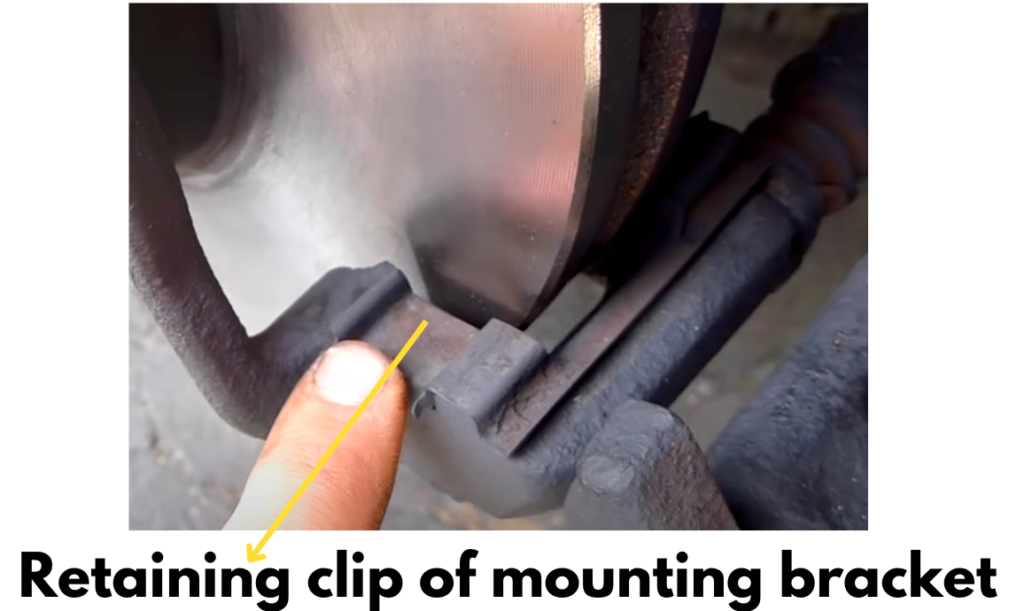
The caliper must slide when the brakes are applied. This allows the brakes to work right. But dirt or gunk or trash can get between the caliper and bracket.
This stops the caliper from sliding all the way to the disc. So the brake pad and disc do not completely touch. Then the brakes are not as strong as they need to be.
It’s important that the brake caliper directly touches the outboard brake pad. The caliper piston directly touches the inboard brake pad. I explained this in previous section.
If dirt gets between the caliper and outboard pad, the brake pad can’t press evenly on the rotor. So the pad does not fully contact the rotor surface.
How to fix this?
You should spray this brake dust cleaner to remove any trash between the caliper and the mounting bracket.
First, you need to make sure that your brakes are cool before you start. Now, take brake dust cleaner and simply spray it on your wheels and brake caliper. Make sure to foam it into where the brake pads are located.
After a few minutes of spraying, the brake cleaner will foam and drip all the brake dust out. Then, wash the wheel and brake caliper thoroughly with the garden hose.
3. Wheel Is Misaligned
The brakes contact the wheels to slow down the car. If the wheels are not aligned, the brakes can’t touch the whole brake disc as the disc is also bolted to the wheel.
When the wheels of your car are out of alignment, they will not be in the correct position relative to the brake disc.
This means the brakes won’t work as well.
How do you know if the wheels are misaligned?
You can see these signs that the wheels are crooked:
- The tires wear out more on one side.
- The car shakes when you brake.
- You hear squeaks or grinding when braking.
- The car pulls to one side when braking.
- The steering wheel isn’t straight when driving.
To fix misaligned wheels, find a good mechanic. They have tools to check the wheel’s alignment. The computerized machine tells if the wheels are misaligned.
Then the mechanic makes adjustments to the camber, caster, and toe angles to get the wheels straight again.
4. Wheel Is Not Properly Tightened
The wheel’s lug nuts must be tightened just right when putting back parts on a car’s disc brake. If not done properly, there could be safety problems.
Lug nuts that are too loose let the wheel wobble. This makes the brake disc and wheel bearing not line up right. With bad alignment, the brake pad can’t meet the entire disc evenly.
It is also key to tighten the lug nuts in a star pattern. This makes sure the wheel is secured evenly to the hub. It spreads the force evenly across the wheel. Doing this keeps the wheel from getting warped.
If the lug nuts are tightened in a circle instead, one part of the wheel may get too tight. This makes the wheel lopsided. An uneven wheel can make the brake disc bend over time. This gives worse braking power and safety.
5. Loose Caliper and Mounting Bracket
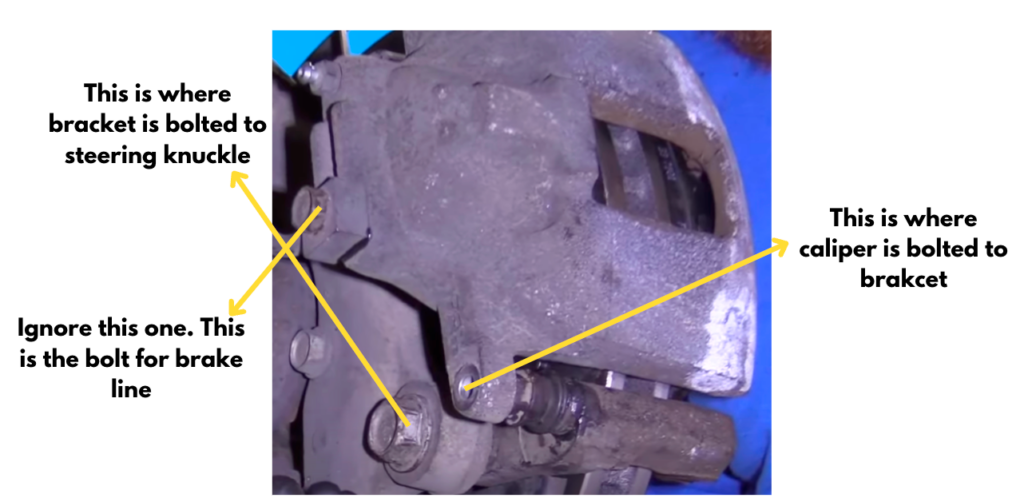
The brake caliper sits fixed to the sliding pin of the mounting bracket. This bracket then bolts to the steering knuckle.
When swapping out brake parts, you may need to remove the whole brake caliper and mounting bracket assembly. It’s key to tighten the bolts to the listed torque specs. If not, the bolts could come loose over time. That could lead to safety issues on the road.
If the mounting bracket and brake caliper bolts come loose, the caliper may not squeeze the brake pads hard enough against the brake disc. That means the pressure won’t spread evenly across the brake disc.
Loose bolts can also let the mounting bracket shift. Then the brake pads move out of line with the brake disc. When the pads sit crooked to the disc, they won’t make full contact when you hit the brake pedal.
6. Air In The Brake Line
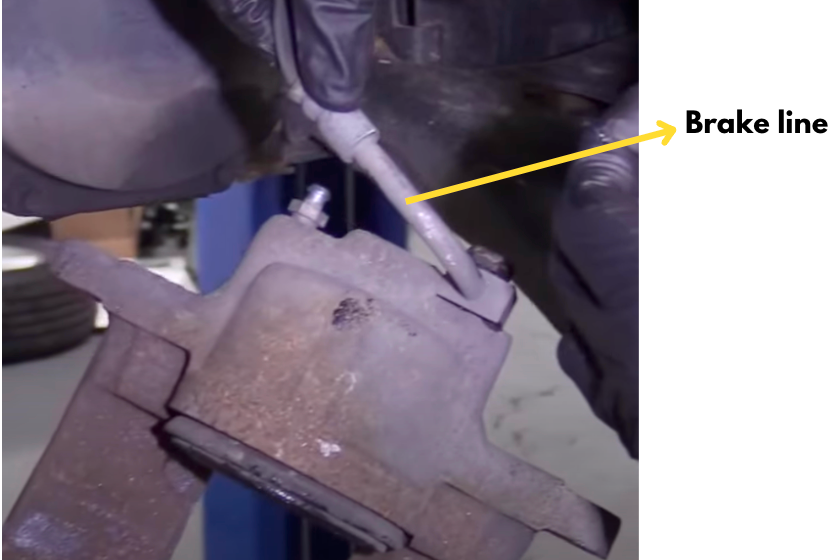
The brake pedal pushes force to the master cylinder. The master cylinder sends brake fluid through the lines to the calipers or wheel cylinders. Pressure makes the brake pads or shoes press the brake disc. This stops the car.
If the brake line comes off the caliper during brake work, air can get in the hose. This happens because the system is open and not sealed right.
Air in the brake lines is bad. Brake fluid does not compress. But air does. So when you push the pedal, air squeezes but fluid does not. This loses pressure.
Lost pressure keeps the caliper from pushing the brake pad hard on the disc. The pad only contacts part of the disc. This makes the pedal feel soft or spongy. Hard to control the car when braking.
You must bleed the brake line after taking it off. This removes trapped air. Bleeding leaves only fluid in the system, maintains pressure, and lets the brakes work right.
How to fix air trapped in brake hose?
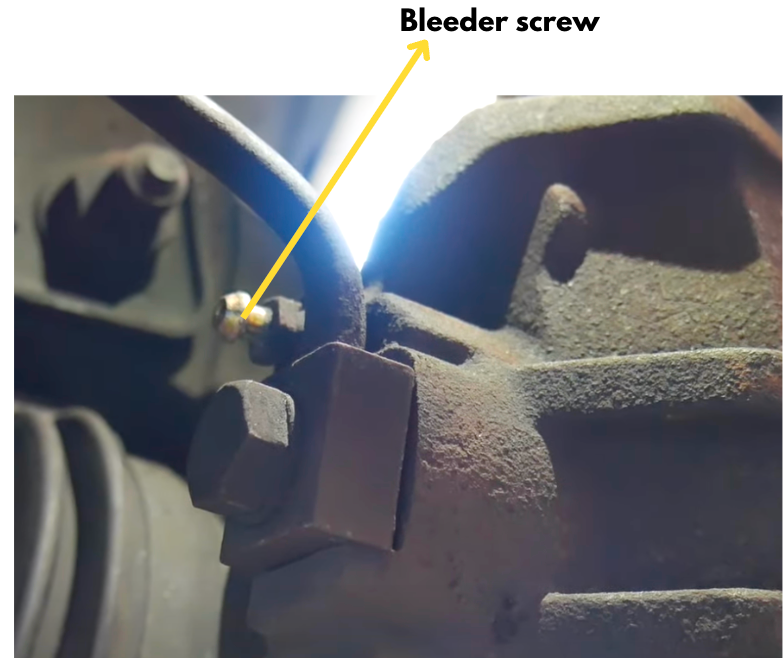
Bleeding the brake line is an important step after completing brake-related work and connecting the brake line to the brake caliper. To begin the process, follow these steps:
- Have someone sit in the driver’s seat and slowly pump the brake pedal.
- Gently crack open the bleeder screw until brake fluid starts coming out.
- Keep a container nearby to collect any spilled fluid, such as an empty water bottle.
- Once the brake fluid starts flowing, use a wrench to tighten the bleeder valve and catch any remaining fluid in the container.
Remember not to release the brake pedal before closing the bleeder. Closing the bleeder first prevents air from being drawn back into the caliper.
7. Brake Pads Are Vibrating Due to Lack Of Grease
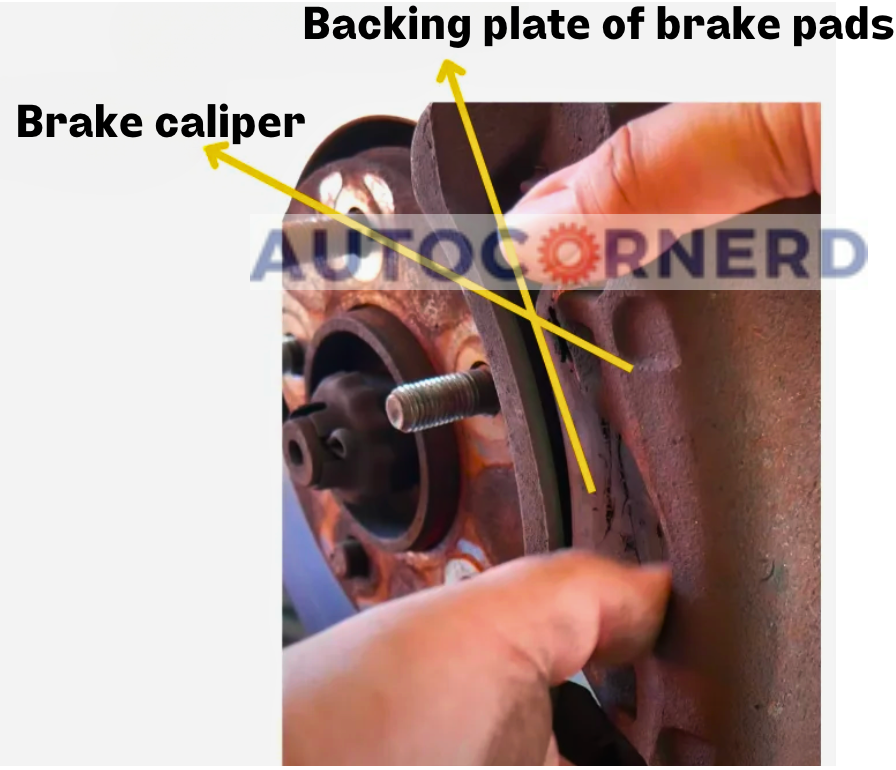
Brake pads are a very important part of a car’s braking system. They work to slow down and stop the car. They do this by squeezing against the brake disc or drum. For the brake pads to work right, they need lubrication.
The brake pads touch three things. The front and back edges of the pads touch the disc. The back of the pad contacts the brake caliper.
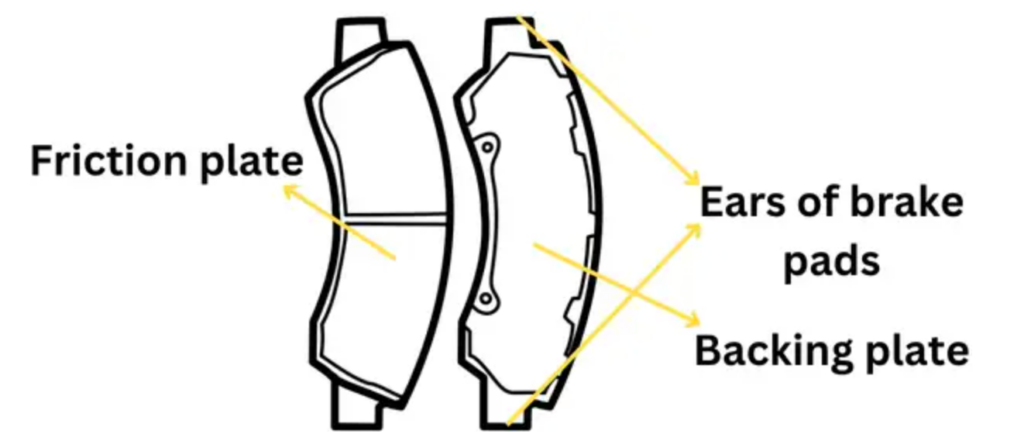
If the brake pads don’t have enough lube, problems can happen. Without lube, the brake pads might shake or vibrate when braking. This is because they can’t slide smoothly on the clips. It can also make the pads stick and not move right.
If the ears of the pads and the clips they sit in don’t have enough lube, the pads won’t slide smoothly. Because of this, the brake pads might not evenly contact the whole disc. This makes the brakes not work as well.
Also, vibration between the brake pad back and the caliper can stop the brake pads from engaging the whole brake rotor. This also makes the brakes not work as well.
How to fix vibrating brake pads?
To solve this issue, the brake pads’ contact points must be lubricated using high-temperature brake grease or an anti-seize compound.
This helps to reduce friction and wear during braking, as well as reduce vibrations and ensure that the brake pads can glide smoothly along the retaining clips of the mounting bracket.
I would recommend ATE Plastilube Grease. Apply it on the ears brake pads and backing plate. to fight the rust from returning and binding the pads.
You should also apply grease on the area of the backing plate of the brake pad where it contacts the brake caliper. Make sure you don’t apply grease to the friction plate of the brake pad as it will damage the material and brake rotor.
8. Improper Size Of Brake Pads
The size of brake pads is very important for a vehicle’s braking system. Any problem with size can cause issues.
The common reasons brake pads don’t hit the entire rotor are:
- Buying cheap aftermarket brake pads that are the wrong size
- Putting rear brake pads on front wheels. Front pads are thicker and longer than rear.
Aftermarket pads have the same backplate size. But the friction part is different sizes. This leaves more unswept area on disc edges.
Brake pads too long may not fit the clips in a right way. They won’t slide smoothly.
Grinding a little off may help fit the caliper frame properly. Remove only a bit at a time. Test after each grind. Repeat until seated properly.
Short brake pads may not hold themselves in place by friction. They may not slide smoothly on the clips when braking. This causes bad braking. As a result, short brake pads may not contact the complete brake disc.
Thinner pads than stock leave too much space between the brake pads and the caliper. As a result, there may not be enough pressure to squeeze the brake pads into the rotor when the brake is not applied.
9. Caliper Piston Is Damaged
The caliper piston is an important part of the brake system. It pushes the brake pads against the spinning disc.
When you press the brake pedal, brake fluid moves to the caliper. This makes the piston come out. The piston pushes the brake pad on the disc. This makes friction that slows or stops the vehicle.
But if the caliper piston is damaged, it may not come out all the way. Then there is not enough push on the brake pads against the whole disc. This can give worse braking. It can make a longer stopping distance. Or it can even cause brake failure. That is risky for safety.
The caliper piston can get damaged from dirt, junk, or rust. This can hurt the seal inside the piston. Then the piston has trouble coming out or going back in. It can get stuck or not come out as far as needed. This gives less braking power.
How to test bad caliper piston?
To test for a damaged caliper piston, you can use a big G-clamp to push it back and observe how the piston moves.
If there is any binding or inconsistencies in the motion, such as a rough feel or a dragging sensation, it can indicate that the brake piston may be bad and needs replacement. Sometimes, the entire caliper may need to be rebuilt if the damage is severe.
10. Glazed Brake Pads
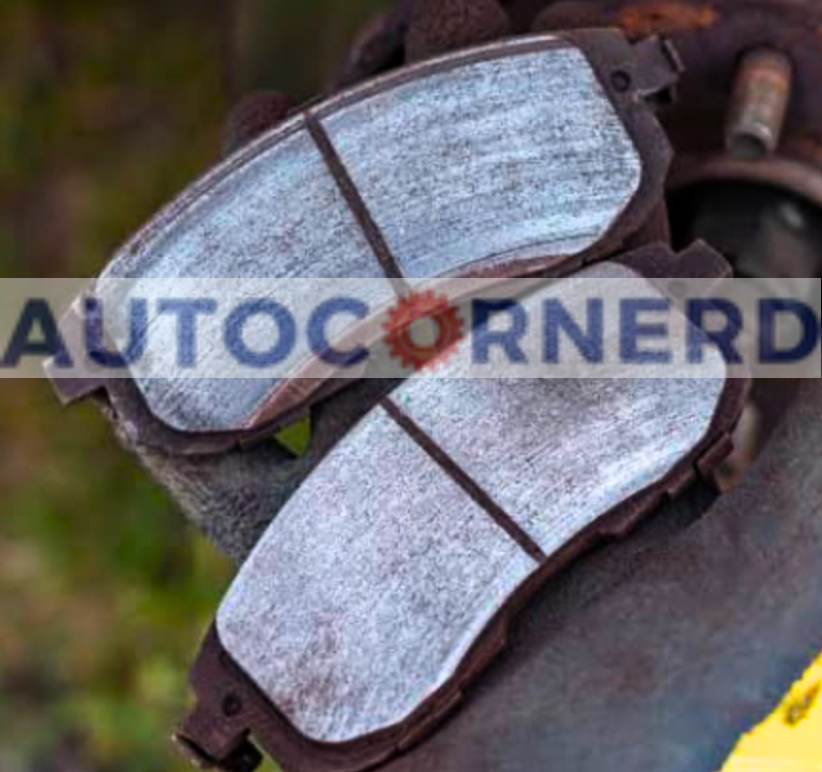
The brake pads can get shiny and glossy from too much heat. This is called glazing. It happens when the brakes get used too much.
Brake pads work best in a certain temperature range. If they get too hot, the materials inside start to melt. This makes the glossy surface. It stops them from slowing the vehicle well. You’ll hear a grinding noise when you hit the brake pedal.
Glazed pads look shiny where they touch the brake rotor. They might have tiny cracks too.
Because the surface is uneven, the pads can’t fully contact the rotor. Some areas get left untouched.
If the brake pads are only a little glazed, you can fix them. Wet them with isopropyl alcohol. Use 280 to 320 grit sandpaper on concrete or granite. Scuff up the pads.
Another way is to scuff the pads on sidewalks or asphalt. This can reduce glazing and improve the brakes.
Final Thoughts
The partial contact of brake pads and rotor can be unsafe. This can make braking less effective.
The main reason is rotors that are worn or warped. This can happen from things like age, overheating, uneven braking, or bad maintenance.
Other reasons could be stuck brake calipers, wheels not aligned right, loose or damaged parts, air in the brake line, or wrong size brake pads.
To fix this, check the rotors and calipers. Align the wheels properly. Tighten the caliper and mounting bracket. Clean and regrease the slider pins and pad ears. Replace any bad parts.
Some First Hand Experiences Shared By Users In Different Communities
Our team conducted research across various online communities, forums, and subreddits to gather user comments and opinions on “brake pads not contacting the whole disc”.
User 1 says:
Had this on my GMC Sierra. The pads weren’t contacting the whole disc because of rust on the caliper slides. Cleaned them up and applied proper lubrication, and it’s working fine now.
User 2 says:
Experienced uneven braking in my Subaru Tribeca. I noticed that the brake pads were not fully contacting the disc. The culprit was a bent mounting bracket. Got it replaced and the issue was resolved.
User 3 says:
ad a similar issue with my Kia Stinger. I found out the brake pads weren’t contacting the whole disc because of a seized caliper piston. Had to get the caliper rebuilt to resolve it. It’s something to look out for in performance cars.
User 4 says:
I noticed uneven brake pad wear on my Mazda CX-9. The inner pad was more worn than the outer one. After some research, I discovered it was due to the caliper not sliding smoothly, causing the pad not to touch the entire disc. Lubricating the caliper slide pins fixed it.
User 5 says:
My Volvo XC90 had a similar issue. After inspection, I found out that the brake hose was constricted, causing uneven pad wear. Replacing the brake hose solved it.
